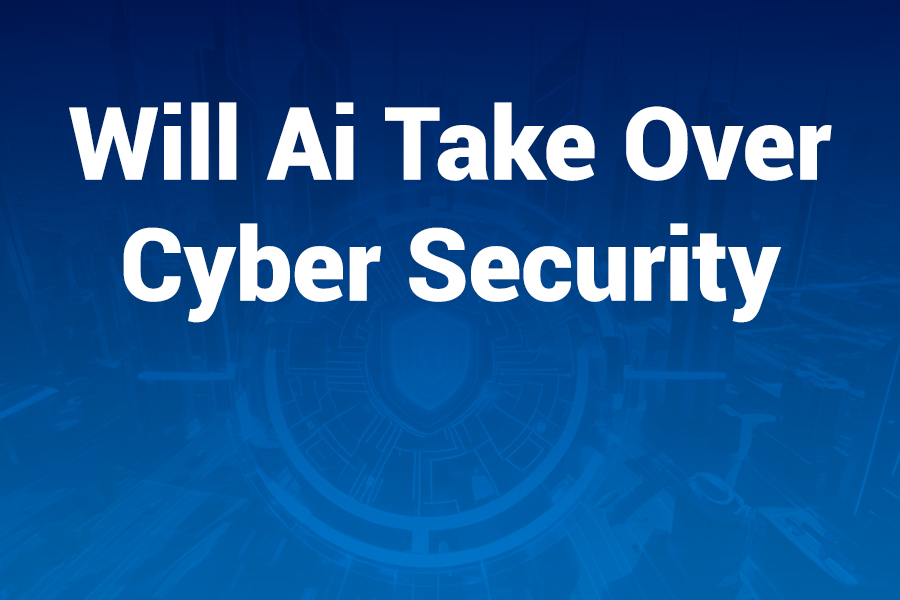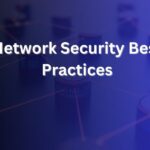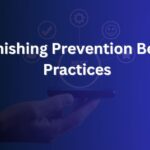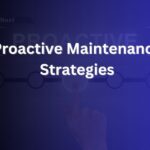Artificial intelligence now touches every layer of defense. Tools crunch logs, flag anomalies, and draft response steps in seconds. That speed changes the game. Some folks worry that AI will replace analysts and blue teams.
The evidence points another way. AI scales grunt work. People still steer context, ethics, and final decisions. You need both to win. You also need clear guardrails. You will learn the real limits, the practical upsides, and the next steps to build resilient, human-led security in this article.
The Short Answer
AI will not take over cyber security. It will take over repetitive work. Humans will run strategy, judgment, and trust.
Why “Take Over” Framing Misses the Point
Attackers move fast. They test new LLM jailbreaks, deepfakes, and polymorphic payloads daily. Defenders need speed. AI provides speed.
People provide meaning. Models see patterns. Humans read intent, business risk, and law. You need both halves to close the gap.
What AI Already Does Well
AI turns raw telemetry into ranked signals. It highlights unusual identities, devices, and flows. It enriches alerts with context from tickets, CMDBs, and threat intel.
It drafts playbook steps for common incidents. It reduces toil on patch hygiene and compliance drift. It boosts phishing defense with adaptive simulations and just-in-time training nudges.
Proof That AI Helps, Not Replaces
Organizations that deploy AI and automation cut breach costs and shrink dwell time. Recent benchmarking shows multi-million-dollar average savings per breach when teams automate detection and response.
hat gap shows up in faster containment and fewer manual handoffs. The same pattern appears in security operations. Teams that pair analysts with AI cut false positives and move faster at triage. AI gives lift. People keep control.
The Paradox: Offense Uses AI Too
Attackers use AI to scale social engineering and evasion. They craft custom phishing at volume. They clone voices for vishing. They stitch deepfake video to mimic executives on live calls. One high-profile heist showed how a convincing deepfake on a conference call pushed an employee to move tens of millions. The lesson lands hard. You cannot block deepfakes with firewalls alone. You need process checks and culture.
Where AI Falls Short
AI lacks lived context. It cannot weigh political optics, customer trust, or contract penalties without clear rules. It can hallucinate. It can overfit on noisy data. It can miss slow, patient attackers who mimic normal behavior. It can inherit bias from training logs. It can leak secrets if teams feed sensitive case notes into unmanaged tools. You need strict data boundaries and review.
Risk Themes You Must Manage
Model poisoning can twist detections. Prompt injection can subvert automated runbooks. Data exposure can turn internal logs into attacker recon. Black-box scoring can mask why the model raised a flag. Over-automation can push a bad change to thousands of endpoints. Human checks stop these failures. Document those checks. Test them often.
Jobs Do Not Disappear; They Evolve
Repetitive work shrinks. Higher-order work grows. Analysts act like mission controllers. They guide AI, review actions, and decide the final step. Threat hunters use AI to query huge trails and pivot faster. IR leads use AI to assemble timelines and draft comms. Governance pros shape policy for model use, audit, and liability. Security architects design safe data flows so AI never sees more than it should.
The Real Skills That Rise in Value
You need stronger writing and communication. You need risk framing that a CFO and GC understand. You need policy judgment for privacy and audit. You need fluency with data. You need curiosity that refuses easy answers. You need enough ML literacy to challenge model output. You ask better questions. You verify before you act.
Recent Stats That Matter
Cybercrime costs continue to climb toward trillions per year. Unfilled security roles still sit in the millions worldwide. Organizations with extensive AI security see faster detection, faster containment, and lower average breach costs. Meanwhile, adversaries use AI to raise click-through rates on phishing and to sharpen business-email compromise. Those two arcs define your job. Use AI to compress time. Use people to manage risk.
A Simple, Clear Threat Model for AI Era
Assume AI makes attackers faster at research and pretext. Assume they can fake the boss on video. Assume they can tailor payloads at scale. Now map your controls. Strong identity, strong device hygiene, strong network micro-segmentation, strong data classification, and strong process checks on money movement. Add culture. Teach staff to pause, phone-back, and verify.
Build a Human-in-the-Loop Security Stack
Design your stack so AI proposes and people decide. Keep humans in the approval path for high-risk actions. Log every suggestion, decision, and outcome. Use those logs to retrain models and improve playbooks. Remove sensitive fields from prompts and outputs by default. Mask data in lower environments. Apply least privilege to model inputs and outputs. Treat your orchestration layer like production code.
Core Capabilities to Automate First
Automate identity outliers. Automate basic containment for commodity malware. Automate patch prioritization by exploitability. Automate phishing reporting and takedown. Automate enrichments for tickets. Automate cloud baseline drift detection. Keep a person in the loop for final isolation steps on critical systems.
High-Impact Wins in the First 90 Days
Map your top five crown-jewel workflows. Add AI to triage and enrichment. Add policy checks that require human approval for any change that touches money, data exfiltration, or production downtime. Add a second-factor verification for payments and vendor bank updates. Add deepfake awareness drills to executive assistants and finance teams. Add a “call-back using a known number” rule. Announce that rule widely.
Guardrails for Data and Privacy
Define which data can enter prompts. Ban secrets, session tokens, and PII from free-text fields. Use redaction. Use private endpoints or on-prem deployments for sensitive workloads. Rotate keys and tokens often. Apply DLP to model inputs and outputs. Add legal review for model vendors and data residency. Write a short model card for each use case. Note training data, limits, and review steps.
Explainability Without the Buzzwords
Your analysts need to know why the AI flagged an event. Give them features that drove the score. Show peer behavior comparisons. Show recent changes on the asset. Show the identity’s role and privilege level. Show recent failed logins and geolocation jumps. Show known CTI overlaps. Keep the UI simple. Help humans decide with confidence.
Training That Actually Sticks
Do not run annual slide decks. Run small, frequent drills. Use AI to personalize training to each role. Show real examples from your environment. Show the deepfake the CFO almost fell for. Show the prompt injection that tried to edit a ticket. Celebrate the person who slowed down and verified. That story spreads faster than a policy PDF.
Metrics That Prove Value
Track mean time to detect. Track mean time to contain. Track false-positive rate. Track analyst tickets per week. Track auto-resolved incidents with human review. Track how often humans overturn AI suggestions. Track near-misses from deepfakes and payment fraud. Share wins with finance and operations. Translate wins into hours saved and losses avoided.
How to Talk About AI With Executives
Use plain English. Frame goals in time and risk. “We cut triage time by 40%.” “We reduced phishing click-through by half.” “We now verify every high-value payment with call-back.” Tie spend to reduced loss and faster recovery. Flag residual risk. Flag legal exposure. Ask for decisions you truly need, not everything under the sun.
Regulatory and Legal Reality
Expect more model accountability rules. Expect audits on data use. Expect breach notices to ask about automated decision-making. Write policies now. Define roles, approvals, and logging. Prove you keep humans in charge. Prove you minimize data. Prove you can explain a decision. Those proofs lower legal heat when something goes wrong.
Small and Mid-Size Businesses Are Not Locked Out
You do not need a giant budget. Start with managed EDR that includes AI-led detections. Use your cloud provider’s native anomaly tools. Turn on phishing simulation with adaptive training. Use MFA everywhere. Add a payment verification rule. Add a device posture check before granting access. Keep it simple. Keep it visible.
Bigger Enterprises: Avoid the AI Tool Sprawl
You likely own overlapping features across vendors. Map them. Consolidate where it helps. Standardize on a small set of orchestration patterns. Write shared playbooks with modular steps. Build internal libraries for enrichments. Create a small AI review board. Include security, privacy, legal, and operations. Move fast, but with eyes open.
Human Judgment Beats Hype
A slick demo can hide brittle edges. Ask for base rates and false-positive data. Ask how the model behaves when logs go dark. Ask how it handles a patient attacker who lives inside normal. Ask how it prevents prompt injection. Ask how you disable automated actions under stress. Trust, but verify.
Action Checklist
Define risk thresholds for automated actions. Keep human approval on the top tier.
Redact sensitive data from prompts by default. Mask test environments.
Record model inputs and outputs. Review them weekly.
Train finance and executives on deepfake and payment fraud. Run drills.
Measure detection, containment, false positives, and analyst time saved. Report quarterly.
Consolidate overlapping tools. Keep orchestration simple and observable.
Frequently Asked Questions
Will AI replace SOC analysts?
No. AI will draft steps and rank alerts. Analysts will confirm context and choose the action.
Can AI stop deepfakes?
AI can help detect tells. Process stops the money from moving. Use call-back and multi-person approvals.
Does AI increase risk?
Yes, if you over-automate or leak data into prompts. Guardrails and reviews reduce that risk.
What skills help my career most?
Write clearly. Frame risk for leaders. Learn data fluency. Learn basic ML guardrails. Stay curious.
What about compliance?
Log decisions. Document model limits. Prove human oversight. Minimize data. Review vendors with legal.
A Realistic Future State
Security becomes more predictive. AI watches patterns and suggests the next best step. Humans set goals, ethics, and stop-gaps. Teams focus on resilience and recovery speed. Finance sees fewer surprise losses.
Customers see faster, calmer incident handling. That future does not remove people. It raises their impact.
Bottom Line
AI will not take over cyber security. It will take over drudgery. Let it. Pair that speed with human judgment. Build guardrails that keep trust intact. Teach your people to verify. Measure results and show them in dollars and hours.
That focus wins more battles than any shiny feature list. You do not need perfection. You need momentum with control.







